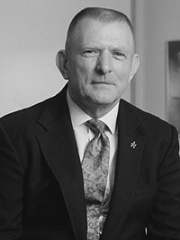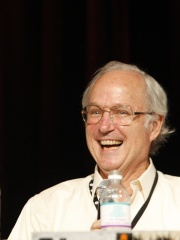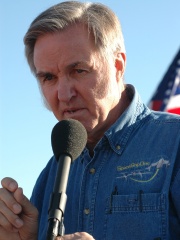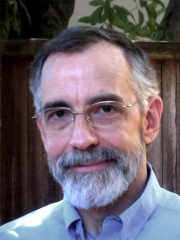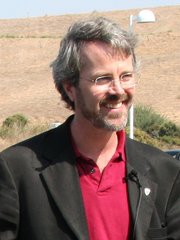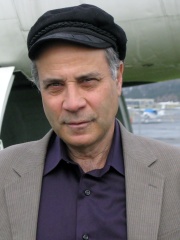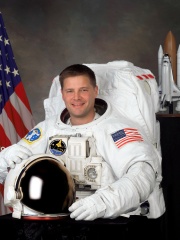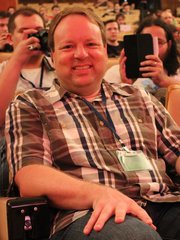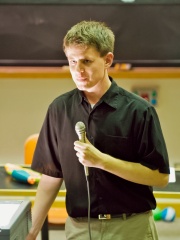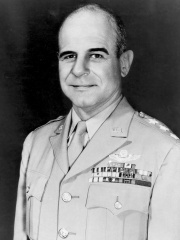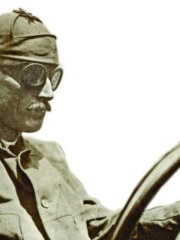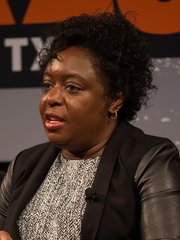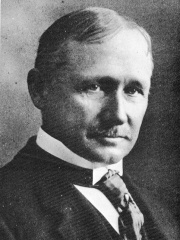
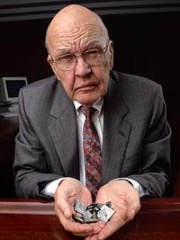
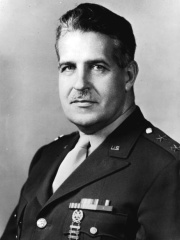
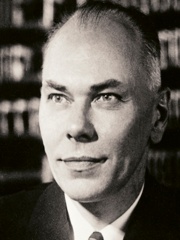
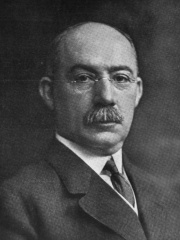
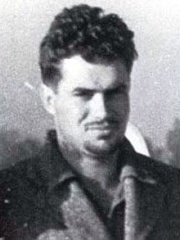
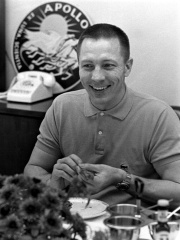

The Most Famous
ENGINEERS from United States
This page contains a list of the greatest American Engineers. The pantheon dataset contains 389 Engineers, 57 of which were born in United States. This makes United States the birth place of the 3rd most number of Engineers behind France, and United Kingdom.
Top 10
The following people are considered by Pantheon to be the top 10 most legendary American Engineers of all time. This list of famous American Engineers is sorted by HPI (Historical Popularity Index), a metric that aggregates information on a biography's online popularity. Visit the rankings page to view the entire list of American Engineers.

1. Frederick Winslow Taylor (1856 - 1915)
With an HPI of 75.32, Frederick Winslow Taylor is the most famous American Engineer. His biography has been translated into 50 different languages on wikipedia.
Frederick Winslow Taylor (March 20, 1856 – March 21, 1915) was an American mechanical engineer. He was widely known for his methods to improve industrial efficiency. He was one of the first management consultants. In 1909, Taylor summed up his efficiency techniques in his book The Principles of Scientific Management which, in 2001, Fellows of the Academy of Management voted the most influential management book of the twentieth century. His pioneering work in applying engineering principles to the work done on the factory floor was instrumental in the creation and development of the branch of engineering that is now known as industrial engineering. Taylor made his name, and was most proud of his work, in scientific management; as a result, scientific management is sometimes referred to as Taylorism. His main source of income came from patenting improvements to steelmaking.

2. Jack Kilby (1923 - 2005)
With an HPI of 71.96, Jack Kilby is the 2nd most famous American Engineer. His biography has been translated into 76 different languages.
Jack St. Clair Kilby (November 8, 1923 – June 20, 2005) was an American electrical engineer who took part, along with Robert Noyce of Fairchild Semiconductor, in the realization of the first integrated circuit while working at Texas Instruments (TI) in 1958. He was awarded the Nobel Prize in Physics on December 10, 2000. Kilby was also the co-inventor of the handheld calculator and the thermal printer, for which he had the patents. He also had patents for seven other inventions.

3. Leslie Groves (1896 - 1970)
With an HPI of 70.99, Leslie Groves is the 3rd most famous American Engineer. His biography has been translated into 36 different languages.
Leslie Richard Groves Jr. (17 August 1896 – 13 July 1970) was a United States Army Corps of Engineers officer who oversaw the construction of the Pentagon and directed the Manhattan Project, a top secret research project that developed the atomic bomb during World War II. The son of a U.S. Army chaplain, Groves lived at various Army posts during his childhood. In 1918, he graduated fourth in his class at the United States Military Academy at West Point and was commissioned into the United States Army Corps of Engineers. In 1929, he went to Nicaragua as part of an expedition to conduct a survey for the Inter-Oceanic Nicaragua Canal. Following the 1931 Nicaraguan earthquake, Groves took over Managua's water supply system, for which he was awarded the Nicaraguan Presidential Medal of Merit. He attended the Command and General Staff School at Fort Leavenworth, Kansas, in 1935 and 1936, and the Army War College in 1938 and 1939, after which he was posted to the War Department General Staff. Groves developed "a reputation as a doer, a driver, and a stickler for duty". In 1940 he became special assistant for construction to the Quartermaster General, tasked with inspecting construction sites and checking on their progress. In August 1941, he was appointed to create the gigantic office complex for the War Department's 40,000 staff that would ultimately become the Pentagon. In September 1942, Groves took charge of the Manhattan Project. He was involved in most aspects of the atomic bomb's development: he participated in the selection of sites for research and production at Oak Ridge, Tennessee; Los Alamos, New Mexico; and Hanford, Washington. He directed the enormous construction effort, made critical decisions on the various methods of isotope separation, acquired raw materials, directed the collection of military intelligence on the German nuclear energy project and helped select the cities in Japan that were chosen as targets. Groves wrapped the Manhattan Project in security, but spies working within the project were able to pass some of its most important secrets to the Soviet Union. After the war, Groves remained in charge of the Manhattan Project until responsibility for nuclear weapons production was handed over to the United States Atomic Energy Commission in 1947. He then headed the Armed Forces Special Weapons Project, which had been created to control the military aspects of nuclear weapons. He was given a dressing down by the Chief of Staff of the Army, General of the Army Dwight D. Eisenhower, on the basis of various complaints, and told that he would never be appointed Chief of Engineers. Three days later, Groves announced his intention to leave the Army. He was promoted to lieutenant general just before his retirement on 29 February 1948 in recognition of his leadership of the bomb program. By a special act of Congress, his date of rank was backdated to 16 July 1945, the date of the Trinity nuclear test. He went on to become a vice president at Sperry Rand.

4. Howard H. Aiken (1900 - 1973)
With an HPI of 68.18, Howard H. Aiken is the 4th most famous American Engineer. His biography has been translated into 41 different languages.
Howard Hathaway Aiken (March 8, 1900 – March 14, 1973) was an American physicist and a pioneer in computing. He was the original conceptual designer behind IBM's Harvard Mark I, the United States' first programmable computer.
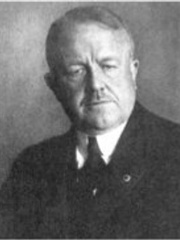
5. Frank Bunker Gilbreth Sr. (1868 - 1924)
With an HPI of 67.43, Frank Bunker Gilbreth Sr. is the 5th most famous American Engineer. His biography has been translated into 29 different languages.
Frank Bunker Gilbreth (July 7, 1868 – June 14, 1924) was an American engineer, consultant, and author known as an early advocate of scientific management and a pioneer of time and motion study, and is perhaps best known as the father and central figure of Cheaper by the Dozen. Both he and his wife Lillian Moller Gilbreth were industrial engineers and efficiency experts who contributed to the study of industrial engineering in fields such as motion study and human factors.

6. Henry Gantt (1861 - 1919)
With an HPI of 66.42, Henry Gantt is the 6th most famous American Engineer. His biography has been translated into 30 different languages.
Henry Laurence Gantt (; May 20, 1861 – November 23, 1919) was an American mechanical engineer and management consultant who is best known for his work in the development of scientific management. He created the Gantt chart in the 1910s. Gantt charts were employed on major infrastructure projects including the Hoover Dam and Interstate highway system and continue to be an important tool in project management and program management. Gantt is also recognized as an early proponent of the social responsibility of businesses.

7. Jack Parsons (1914 - 1952)
With an HPI of 66.17, Jack Parsons is the 7th most famous American Engineer. His biography has been translated into 17 different languages.
John Whiteside Parsons (born Marvel Whiteside Parsons; October 2, 1914 – June 17, 1952) was an American rocket engineer, chemist, and Thelemite occultist. Parsons was one of the principal founders of both the Jet Propulsion Laboratory (JPL) and Aerojet. He invented the first rocket engine to use a castable, composite rocket propellant, and pioneered the advancement of both liquid-fuel and solid-fuel rockets. Parsons was raised in Pasadena, California. He began amateur rocket experiments with school friend Edward Forman in 1928. Parsons was admitted to Stanford University but left before graduating due to financial hardship during the Great Depression. In 1934, Parsons, Forman, and Frank Malina formed the Caltech-affiliated Guggenheim Aeronautical Laboratory (GALCIT) Rocket Research Group, with support by GALCIT chairman Theodore von Kármán. The group worked on Jet-Assisted Take Off (JATO) for the U.S. military, and founded Aerojet in 1942 to develop and sell JATO technology during World War II. The GALCIT Rocket Research Group became JPL in 1943. In 1939, Parsons converted to Thelema, a religious movement founded by English occultist Aleister Crowley. Parsons and his first wife, Helen Northrup, joined Crowley's Ordo Templi Orientis (O.T.O.); he became the California O.T.O. branch leader in 1942. Historians of Western esotericism cite him as a prominent figure in propagating Thelema in North America. Parsons was dismissed from JPL and Aerojet in 1944, due to his involvement with O.T.O. and his hazardous laboratory practices. In 1945, he and Helen divorced. In 1946, he married Marjorie Cameron. Shortly afterward, L. Ron Hubbard defrauded Parsons of his life savings. Parsons worked as an explosives expert during the late 1940s, but his career in rocketry ended due to accusations of espionage and the increasing trend of McCarthyism. Parsons died at the age of 37 in a home laboratory explosion in 1952; his death was officially ruled an accident but many of his associates suspected suicide or murder. Although publicly unknown during his lifetime, Parsons is now recognized for his innovations in rocket engineering, advocacy of space exploration and human spaceflight, and as an important figure in the history of the U.S. space program. He has been the subject of several biographies and fictionalized portrayals.

8. Jack Swigert (1931 - 1982)
With an HPI of 64.60, Jack Swigert is the 8th most famous American Engineer. His biography has been translated into 38 different languages.
John Leonard Swigert Jr. (August 30, 1931 – December 27, 1982) was an American NASA astronaut, test pilot, mechanical engineer, aerospace engineer, United States Air Force pilot, and politician. In April 1970, as command module pilot of Apollo 13, he became one of 24 astronauts who flew to the Moon. Due to the "slingshot" route around the Moon they chose to safely return to Earth, the Apollo 13 astronauts flew farther away from Earth than any other astronauts before or since, though they had to abort the Moon landing. Before joining NASA in 1966, Swigert was a civilian test pilot and fighter pilot in the Air National Guard. After leaving NASA, he ran for Senate but lost in a primary election against Bill Armstrong. Later he ran for Congress, but was diagnosed with cancer while running. He won the election for Colorado's new 6th district in 1982, but died before being sworn in.

9. Vannevar Bush (1890 - 1974)
With an HPI of 64.55, Vannevar Bush is the 9th most famous American Engineer. His biography has been translated into 44 different languages.
Vannevar Bush ( van-NEE-var; March 11, 1890 – June 28, 1974) was an American engineer, inventor and science administrator, who during World War II headed the U.S. Office of Scientific Research and Development (OSRD), through which almost all wartime military R&D was carried out, including important developments in radar and the initiation and early administration of the Manhattan Project. He emphasized the importance of scientific research to national security and economic well-being, and was chiefly responsible for the movement that led to the creation of the National Science Foundation. Bush joined the Department of Electrical Engineering at Massachusetts Institute of Technology (MIT) in 1919, and founded the company that became Raytheon in 1922. Bush became vice president of MIT and dean of the MIT School of Engineering in 1932, and president of the Carnegie Institution of Washington in 1938. During his career, Bush patented a string of his own inventions. He is known particularly for his engineering work on analog computers, and for the memex. Starting in 1927, Bush constructed a differential analyzer, a mechanical analog computer with some digital components that could solve differential equations with as many as 18 independent variables. An offshoot of the work at MIT by Bush and others was the beginning of digital circuit design theory. The memex, which he began developing in the 1930s (heavily influenced by Emanuel Goldberg's "Statistical Machine" from 1928) was a hypothetical adjustable microfilm viewer with a structure analogous to that of hypertext. The memex and Bush's 1945 essay "As We May Think" influenced generations of computer scientists, who drew inspiration from his vision of the future. Bush was appointed to the National Advisory Committee for Aeronautics (NACA) in 1938, and soon became its chairman. As chairman of the National Defense Research Committee (NDRC), and later director of OSRD, Bush coordinated the activities of some six thousand leading American scientists in the application of science to warfare. Bush was a well-known policymaker and public intellectual during World War II, when he was in effect the first presidential science advisor. As head of NDRC and OSRD, he initiated the Manhattan Project, and ensured that it received top priority from the highest levels of government. In Science, The Endless Frontier, his 1945 report to the president of the United States, Bush called for an expansion of government support for science, and he pressed for the creation of the National Science Foundation.
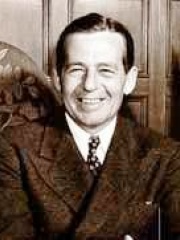
10. Donald Wills Douglas Sr. (1892 - 1981)
With an HPI of 64.10, Donald Wills Douglas Sr. is the 10th most famous American Engineer. His biography has been translated into 19 different languages.
Donald Wills Douglas Sr. (April 6, 1892 – February 1, 1981) was an American aircraft industrialist and engineer. An aviation pioneer, he designed and built the Douglas Cloudster. Though it failed in its intended purpose—being the first to fly non-stop across the United States—it became the first airplane with a payload greater than its own weight. He founded the Douglas Aircraft Company in 1921 (the company later merged with McDonnell Aircraft to form McDonnell Douglas Corporation, which merged with Boeing in 1997). Under his leadership, the company became one of the leaders of the commercial aircraft industry, engaging in a decades-long struggle for supremacy with arch-rival William Boeing and his eponymous enterprise. Douglas gained the upper hand, particularly with his revolutionary and highly successful Douglas DC-3 airliner and its equally popular World War II military transport version, the C-47; at the start of the war, his airplanes made up 80% of all commercial aircraft in service. However, he lagged behind in the jet age and was overtaken and surpassed by Boeing. He retired in 1957.
People
Pantheon has 57 people classified as American engineers born between 1843 and 1989. Of these 57, 14 (24.56%) of them are still alive today. The most famous living American engineers include Gene Kranz, Aron Ralston, and Butler Lampson. The most famous deceased American engineers include Frederick Winslow Taylor, Jack Kilby, and Leslie Groves. As of April 2024, 4 new American engineers have been added to Pantheon including Martin Eberhard, Tom Mueller, and Feargus Urquhart.
Living American Engineers
Go to all RankingsGene Kranz
1933 - Present
HPI: 58.79
Aron Ralston
1975 - Present
HPI: 56.76
Butler Lampson
1943 - Present
HPI: 56.68
Burt Rutan
1943 - Present
HPI: 55.55
K. Eric Drexler
1955 - Present
HPI: 54.70
Martin Eberhard
1960 - Present
HPI: 53.56
Robert Zubrin
1952 - Present
HPI: 50.04
Douglas H. Wheelock
1960 - Present
HPI: 47.48
Ted Jensen
1954 - Present
HPI: 45.36
Tom Mueller
1961 - Present
HPI: 44.51
Feargus Urquhart
1970 - Present
HPI: 38.47
Randall Munroe
1984 - Present
HPI: 38.13
Deceased American Engineers
Go to all RankingsFrederick Winslow Taylor
1856 - 1915
HPI: 75.32
Jack Kilby
1923 - 2005
HPI: 71.96
Leslie Groves
1896 - 1970
HPI: 70.99
Howard H. Aiken
1900 - 1973
HPI: 68.18
Frank Bunker Gilbreth Sr.
1868 - 1924
HPI: 67.43
Henry Gantt
1861 - 1919
HPI: 66.42
Jack Parsons
1914 - 1952
HPI: 66.17
Jack Swigert
1931 - 1982
HPI: 64.60
Vannevar Bush
1890 - 1974
HPI: 64.55
Donald Wills Douglas Sr.
1892 - 1981
HPI: 64.10
Jimmy Doolittle
1896 - 1993
HPI: 63.61
J. Walter Christie
1865 - 1944
HPI: 61.48
Newly Added American Engineers (2025)
Go to all RankingsMartin Eberhard
1960 - Present
HPI: 53.56
Tom Mueller
1961 - Present
HPI: 44.51
Feargus Urquhart
1970 - Present
HPI: 38.47
Kimberly Bryant
1967 - Present
HPI: 34.74
Overlapping Lives
Which Engineers were alive at the same time? This visualization shows the lifespans of the 25 most globally memorable Engineers since 1700.

